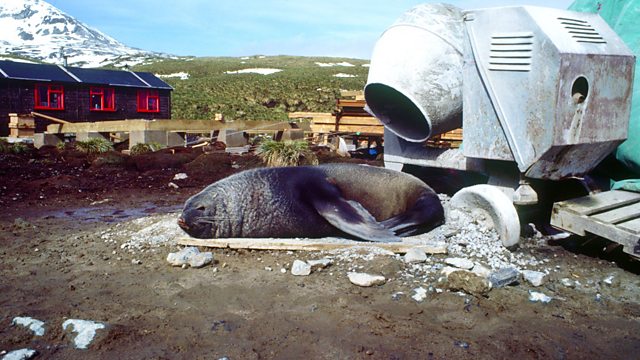Half and Half
The world has lost so much wildlife that some conservationists think half the earth should be set aside for nature. Could this work? Monty Don and a panel of experts discuss.
The world has lost so much wildlife some conservationists think half the earth should be set aside for nature to ensure the world can continue to provide all the services we need such as clean water, unpolluted air and soils, healthy food and so on. But one recent study shows that 50% of wildlife has disappeared in the last 40 years. As human population grows and pressure on resources increases many feel there needs to be a bold plan to ensure we can share the planet with other forms of life so that they and us can continue. One proposition is called Half Earth - make half of the earth just for nature. The vision is for a meandering network of nature corridors that open out into huge parks set aside for wildlife. In a special programme from the Natural History Museum in London Monty Don and a panel of experts in subjects ranging from conservation science to urban planning and economics discuss whether this could work?
Last on
More episodes
Previous
Next
Professor Jonathan Baillie

He has overseen the development of a number of major biodiversity indicators such as the , the IUCN and the WCS/ZSL Wildlife Picture Index. Jonathan has also played a leading role in a number of influential documents on the status of the world’s species including the , the Biodiversity chapter of the and the .
His work has shaped our understanding of the status and trends of mammals, vertebrates, and invertebrates as well as major ecosystems. He is a Chief Scientific Advisor to which represents legislators from all over the world. He is also advisor to a number of funding bodies such as , digital team, and . In addition he co-chairs the IUCN SSC Pangolin Specialist Group and chairs the IUCN National Red List Alliance.
ZSL Twitter:
Professor Andrew Balmford

To have most impact he focuses his research in developing countries and collaborates closely with conservation practitioners and with colleagues in other disciplines. He helped establish the , the and the annual .
His 2012 book highlights success stories in conservation and argues that cautious optimism is essential in tackling environmental challenges.
Dr Vanesa Castan Broto

Her research work focuses on how understanding socio-environmental interactions may help build sustainable and inclusive cities. She currently leads a project funded by the to understand the different roles that energy plays in the everyday lives of people living in cities in the global south.
Other work includes a project to develop participatory urban planning methodologies for climate change, which was distinguished as a 2013 Lighthouse Activity by the programme , and research on the politics of urban innovation for climate change, which has just been published as a monograph called with H. Bulkeley and G. Edwards, 2014: Routledge.
Twitter:
Professor Tim Jackson

He has been at the forefront of international debates about sustainable development for over two decades and has worked closely with the UK Government, the United Nations, and numerous private companies and NGOs to bring social science research into sustainability. His research interests focus on the economic and social aspects of the relationship between people’s lifestyles and the environment.
From 2010 to 2014 Tim was Director of the , a multi-institution research group funded by the Department for the Environment Food and Rural Affairs (DEFRA). The aim of the group was to develop a robust understanding of the links between lifestyle, societal values and the environment, and to provide evidence-based advice to policy-makers seeking to influence people’s lifestyles and practices. From 2006 to 2011 he was founding Director of – the research group on Lifestyles, Values and Environment funded by the ESRC.
Twitter:
Broadcasts
- Tue 13 Jan 2015 11:00�鶹�� Radio 4
- Mon 19 Jan 2015 21:00�鶹�� Radio 4
Learn about habitats with The Open University
Explore the twists and connections of natural life in four different UK habitats.

